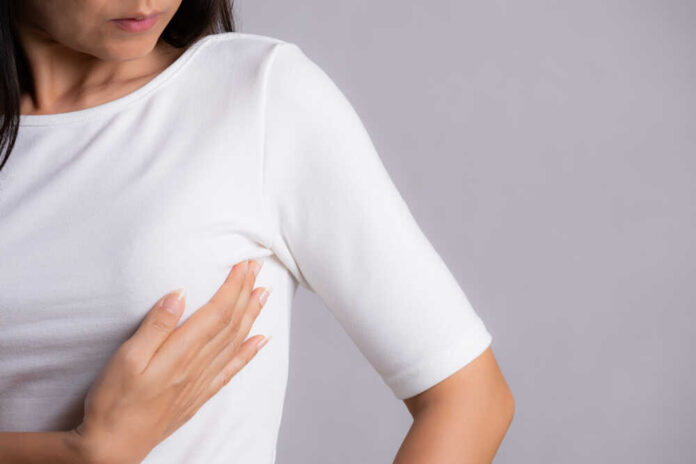
Breast lumps are surprisingly common. Fortunately, most lumps are benign, meaning they are not cancerous.
But it is still very important to have them checked out by a doctor as soon as possible to determine the cause and appropriate course of action.
Seeking Medical Attention
The first step you should take if you find a lump in your breast is to seek medical attention. Schedule an appointment with your primary doctor or ob-gyn as soon as possible.
Your doctor will perform a routine physical exam and an ultrasound or mammogram to get a clearer picture of the lump. They may also take a biopsy to confirm the nature of the lump.
Common Causes of Breast Lumps
There are many potential causes of breast lumps, some of which include:
Cysts: Cysts are fluid-filled sacs that can develop in the breast. They are generally benign and do not require treatment. However, if a cyst becomes painful or starts to grow, your doctor may recommend draining it.
Fibroadenomas: Fibroadenomas are solid, non-cancerous lumps that develop in the breast. They are often round or oval-shaped and can be moved around within the breast tissue.
Mastitis: Mastitis is an infection of the breast tissue that can cause redness, swelling, and tenderness in the affected area. It is typically caused by blocked milk ducts and is most common in women who are breastfeeding.
Breast Cancer: Breast cancer is the most serious cause of breast lumps. It is a type of cancer that starts in the cells of the breast.
While breast cancer can be difficult to detect in its early stages, there are several warning signs to look out for, including a lump in the breast, changes in the shape or size of the breast, and discharge from the nipple.
Self-Examinations
Self-exams are an important part of taking care of your health. Self-examinations of your breasts help you become familiar with your normal breast tissue and detect any changes early on.
To perform a self-exam, you should stand in front of a mirror and look for any changes in the size or shape of your breasts. Next, feel each breast and underarm for any lumps or changes in the tissue. You can do this in the shower or while lying down, using the pads of your fingers to make circular motions over the entire breast area.
If you notice any changes, it is important to seek medical attention as soon as possible.
Keep in mind that some cases of breast cancer do not manifest with any obvious lumps or symptoms. That’s why it is so important to get routine screenings and checkups to detect any unusual tissues that may be hiding deeper in your body.
How to Prepare for a Mammogram
A mammogram is an X-ray of the breast, and it is one of the best ways to detect breast cancer early. Before your mammogram, it is best to avoid using deodorants, powders, or creams as they can cause artifacts on the X-ray.
If you are experiencing any other symptoms besides the lump in your breast, such as a change in the size or shape of the breast, skin dimpling, nipple discharge, or redness or warmth in the affected area, be sure to mention this to your doctor during your appointment.
It is also typically recommended to schedule your mammogram one or two weeks after your period starts, when your breasts are less tender.
It’s normal to feel stress and anxiety after finding a lump in your breast and needing to undergo diagnostic tests. You can talk to your doctor about your concerns, and you should also seek support from your loved ones or a therapist if you need to.
What to Expect After Your Mammogram
If the mammogram shows any suspicious areas, the doctor may ask for additional testing, such as an ultrasound or biopsy. In some cases, the doctor may also refer you to a specialist for further evaluation.
It is important to remember that a lump in your breast does not automatically mean that you have breast cancer. But just in case it is cancerous, early detection is key in successfully treating it, so it’s crucial to have any lumps or unusual changes examined by a doctor as soon as possible.






















